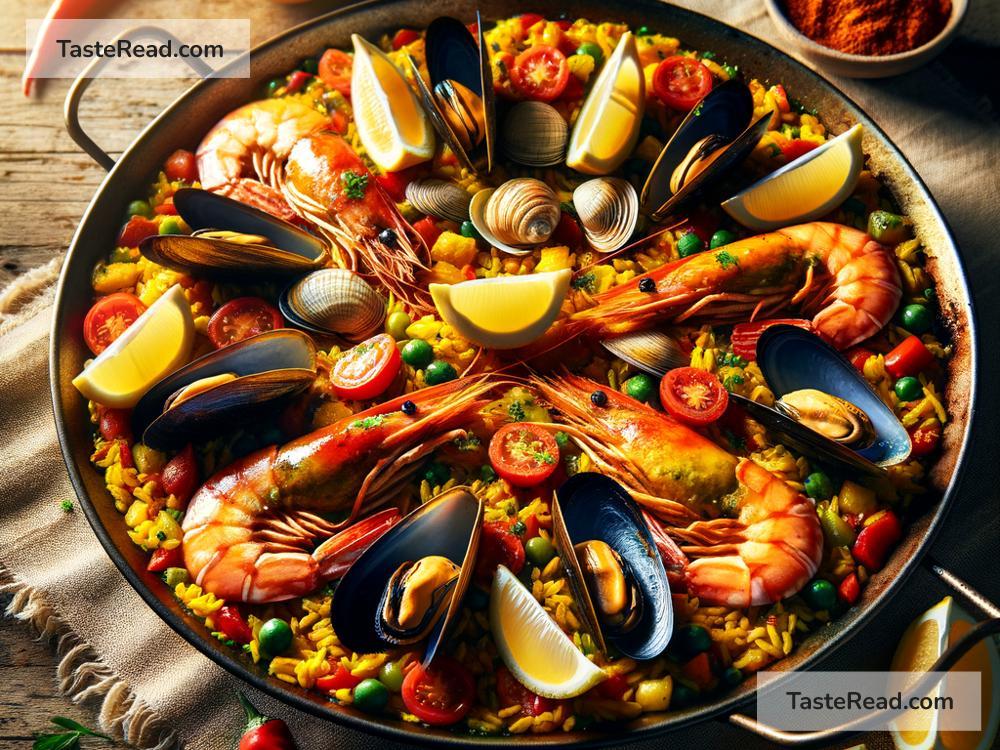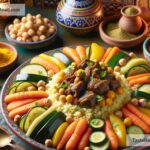The Story of Spanish Paella: A Dish of Culture and Tradition
Spanish paella is one of the most famous and beloved dishes in the world today. With its vibrant colors, rich flavors, and a story tied to history and tradition, this iconic dish represents much more than just food. It is a symbol of Spanish culture, a celebration of community, and a product of Spain’s diverse landscape.
What Is Paella?
Paella is a rice-based dish that originated in the Valencia region of Spain. It is typically cooked in a shallow, round pan called a “paellera” over an open flame. The dish is known for its golden yellow color, which comes from saffron, a spice that adds both flavor and visual appeal.
Paella is not limited to one recipe—it comes in many variations. Some versions feature seafood, like shrimp, mussels, and squid, while others include chicken and rabbit. There is even a vegetarian option filled with seasonal vegetables. However, what truly makes paella special is the way it is cooked: slow and steady, with great attention to detail. It is a meal to be enjoyed and shared with friends and family.
Where Did Paella Come From?
The story of paella begins in Valencia, a region located on the eastern coast of Spain. The name “paella” comes from the Latin word “patella,” which means “pan.” It refers to the pan used to cook the dish, but over time, paella came to mean the dish itself.
The origins of paella trace back to the 15th and 16th centuries, when agriculture in Valencia flourished. The region had perfect conditions for growing rice, thanks to its warm weather and irrigation system. Rice quickly became a staple food for the people living there.
At first, paella was a simple dish that farmers and laborers cooked outdoors over a fire. It was made with ingredients they had at hand—rice, vegetables, beans, and sometimes meat like rabbit or chicken. They used saffron and olive oil to enhance the flavors. This humble dish became a favorite among locals, not only because it was filling and tasty, but also because it was easy to make in large quantities.
How Did Paella Evolve?
Over time, paella evolved and adapted to different tastes and regions. By the 18th century, it was already gaining popularity outside Valencia. As people from coastal areas began adding seafood to the dish, new variations were born. Valencia’s traditional “paella Valenciana” featured chicken, rabbit, and sometimes snails, but the “seafood paella” became just as famous. These two types are still considered the most authentic versions of paella.
Another ingredient that contributed to the dish’s evolution is saffron. This spice, prized for its bright yellow color and distinct flavor, has been grown in Spain for centuries. Adding saffron to paella elevated its quality and turned it into a more refined dish.
In modern times, paella has spread across Spain and the rest of the world. Every region and country has its own way of making paella, featuring local ingredients and cooking methods. For instance, some people include chorizo, while others use different types of herbs and spices. Despite these changes, the essence of paella remains the same—a dish meant to bring people together and celebrate good food.
Why Is Paella So Special?
What makes paella truly special is not just its taste, but the experience of cooking and eating it. In Spain, preparing paella is often a social event. Families and friends gather to cook the dish outdoors, usually on Sundays or during celebrations. Everyone has a role to play, whether it’s chopping vegetables, stirring the rice, or monitoring the fire.
The key to a perfect paella lies in achieving the “socarrat.” This is the crispy layer of rice at the bottom of the pan, which is considered the best part of the dish. Skilled cooks carefully control the heat to create this golden crust without burning the rice.
Paella is also deeply tied to Spanish identity. It reflects the country’s rich agricultural heritage, love for fresh ingredients, and traditions of communal cooking. It is often served at festivals, weddings, and other special occasions, making it a dish of celebration.
Paella Around the World
Today, paella is enjoyed by millions of people worldwide. In many restaurants, chefs offer both traditional recipes and creative twists on the dish. While purists may argue that paella should only be made the Valencian way, others appreciate its adaptability.
In countries like the United States, England, and Australia, paella has become a popular dish for home cooks and food enthusiasts. Some like to prepare it in its original form, while others experiment by incorporating local ingredients or different cooking techniques.
Conclusion
The story of Spanish paella is much more than just the history of a dish—it is a tale of tradition, creativity, and togetherness. From the rice fields of Valencia to dining tables across the globe, paella has evolved over centuries while staying true to its roots. It is a meal that invites people to share time, flavors, and joy. Whether you travel to Spain to try authentic paella Valenciana or make your own version at home, one thing is certain: paella will always be a celebration of life.


